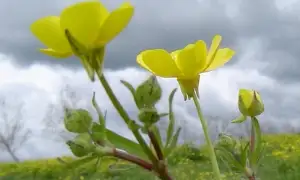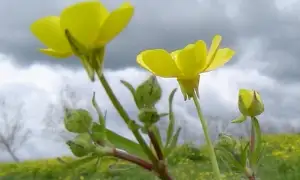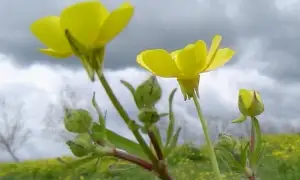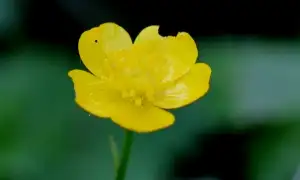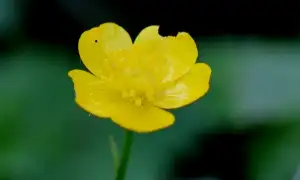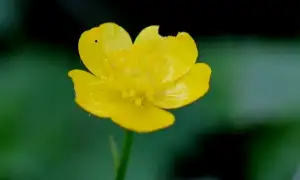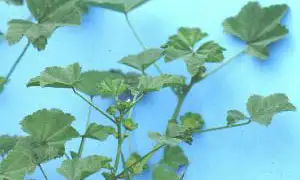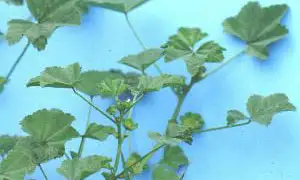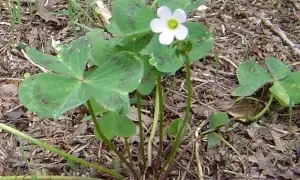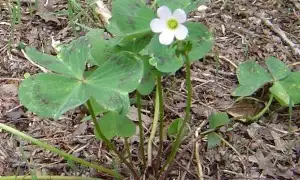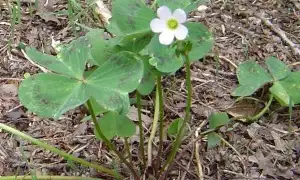Botanical name: Ranunculus acris
Family name: Ranunculaceae
Overview

Giant buttercup.
Buttercups tend to be a problem in moist dairy pastures. They can tolerate wet soil conditions better than many other species, including perennial ryegrass and white clover, allowing buttercups to out-compete more desirable species.
Cows don’t like eating buttercup foliage because of the chemicals within the foliage, which also help them dominate.
Giant buttercup, while not as common as creeping buttercup, is generally the most aggressive of the buttercups found in New Zealand. The giant buttercup can be a significant problem in dairy regions such as Taranaki, Nelson Bays and near Woodville.
Distinguishing features
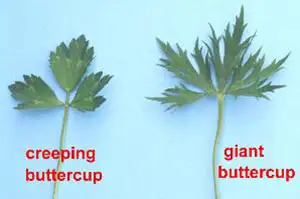
Comparison between the leaves of the creeping buttercup and the giant buttercup.
The main species that the giant buttercup is likely to be confused with is the creeping buttercup. Creeping buttercup produces stolons, whereas giant buttercup has no stolons, and grows in clumps from a crown at ground level.
The leaf shape of the two species also differs slightly. Generally, giant buttercup leaves are more jagged and deeply dissected than creeping buttercup leaves, and the three leaflets that make up each leaf aren’t as clearly defined in giant buttercup.
Creeping buttercup generally has a longer stalk for their middle leaflet, while giant buttercup leaflets don’t really have much in the way of a stalk. As with many weeds, these differences in leaf shape refer mainly to leaves of vegetative plants, as leaf shape can change up flowering stems.
Note that hairy buttercup is also commonly found in areas occupied by giant buttercup, and although its leaves can differ in shape quite a bit, they don’t tend to be as jagged as with giant buttercup. The flowers of the hairy buttercup also differ as they have reflexed sepals, which means that they point downwards, unlike with giant buttercup.
Control
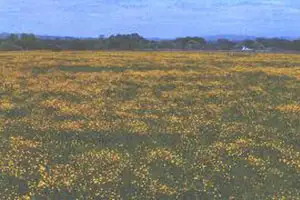
Giant buttercup throughout the pasture.
The control of giant buttercup has never been particularly easy and has usually required several sequential applications of MCPB and MCPA to give lasting control. Although MCPA is more effective than MCPB, it is also more damaging to clovers, which is why MCPB is alternated with MCPA when several applications are used.
Since the 1980s, there have been problems in some areas with biotypes of giant buttercup which have developed resistance to both of these herbicides. After this problem was identified, another couple of products became available on the market for controlling giant buttercup selectively in pasture, and both of these were effective against the resistant biotypes.
One product is thifensulfuron (Harmony) and the other is flumetsulam (Preside). These also need follow-up applications to give 100% control, with flumetsulam being more selective to clovers than thifensulfuron.
However, recent Massey University research has shown that farmers who have been using flumetsulam for many years in succession have now ended up with giant buttercup that is resistant to this herbicide too, with cross-resistance to thifensulfuron.
It appears the best strategy is to alternate between using MCPA and MCPB in one season and then flumetsulam in the following season. For more information there is also an AgPest page about the biology and control of giant buttercup, though the aminopyralid mentioned at this site is too damaging to clovers for boom-spraying so is only suitable for spot-spraying.
Similar species
Hairy buttercup
Hairy buttercup produces shiny yellow flowers and has sepals below the flower petals that point downwards.
